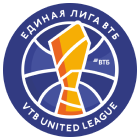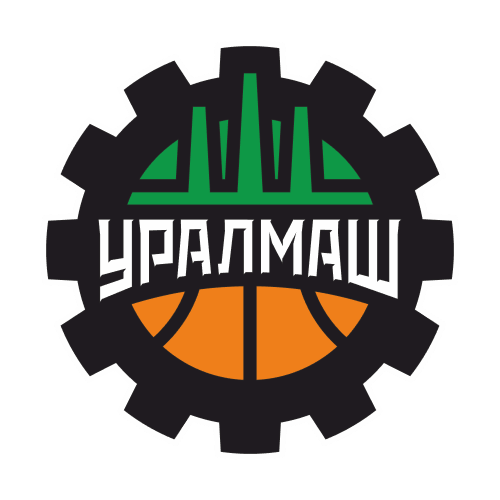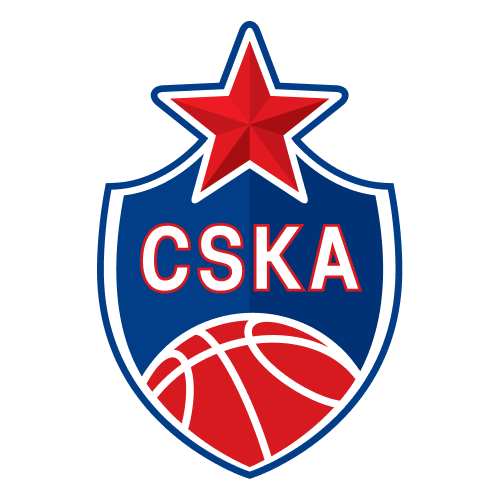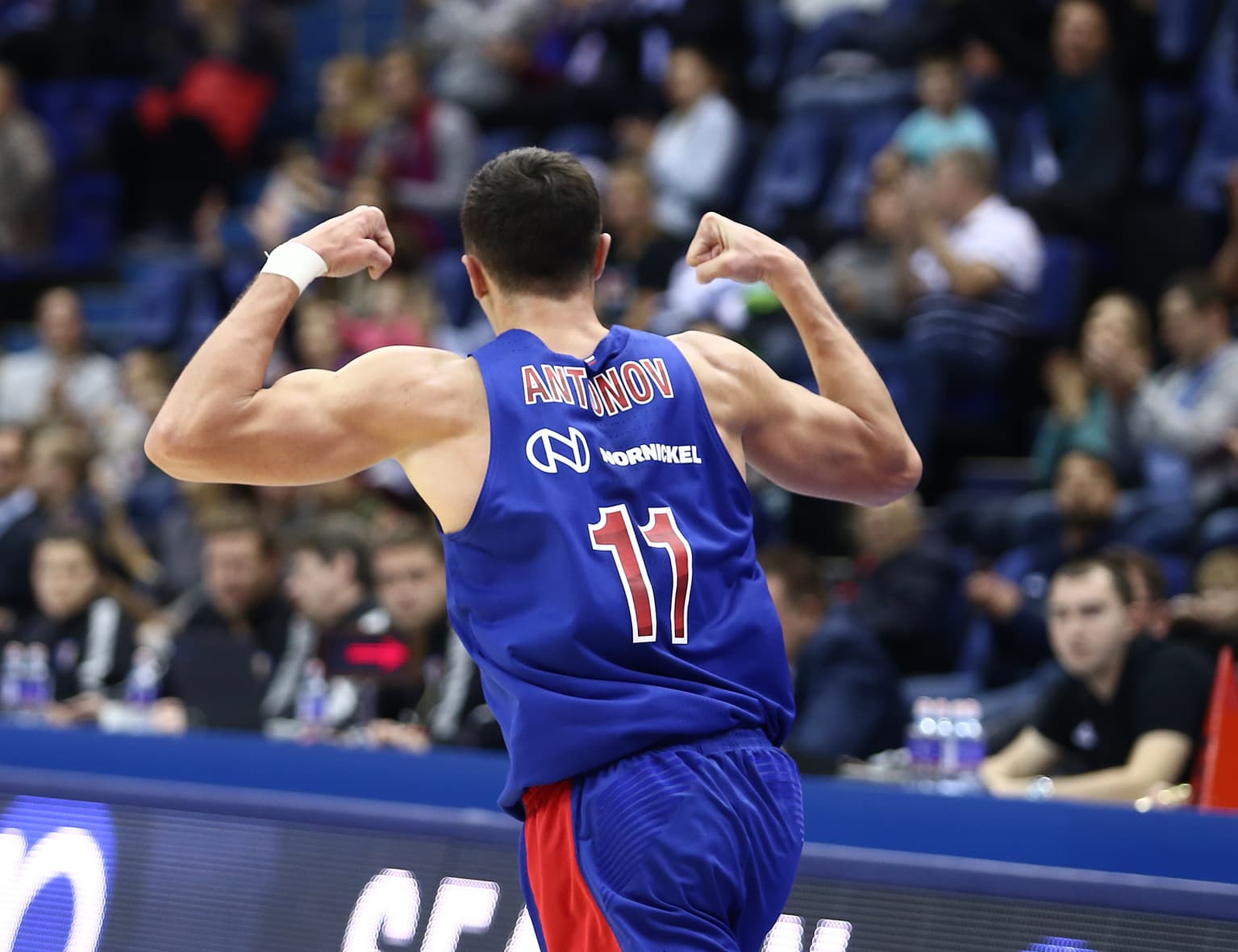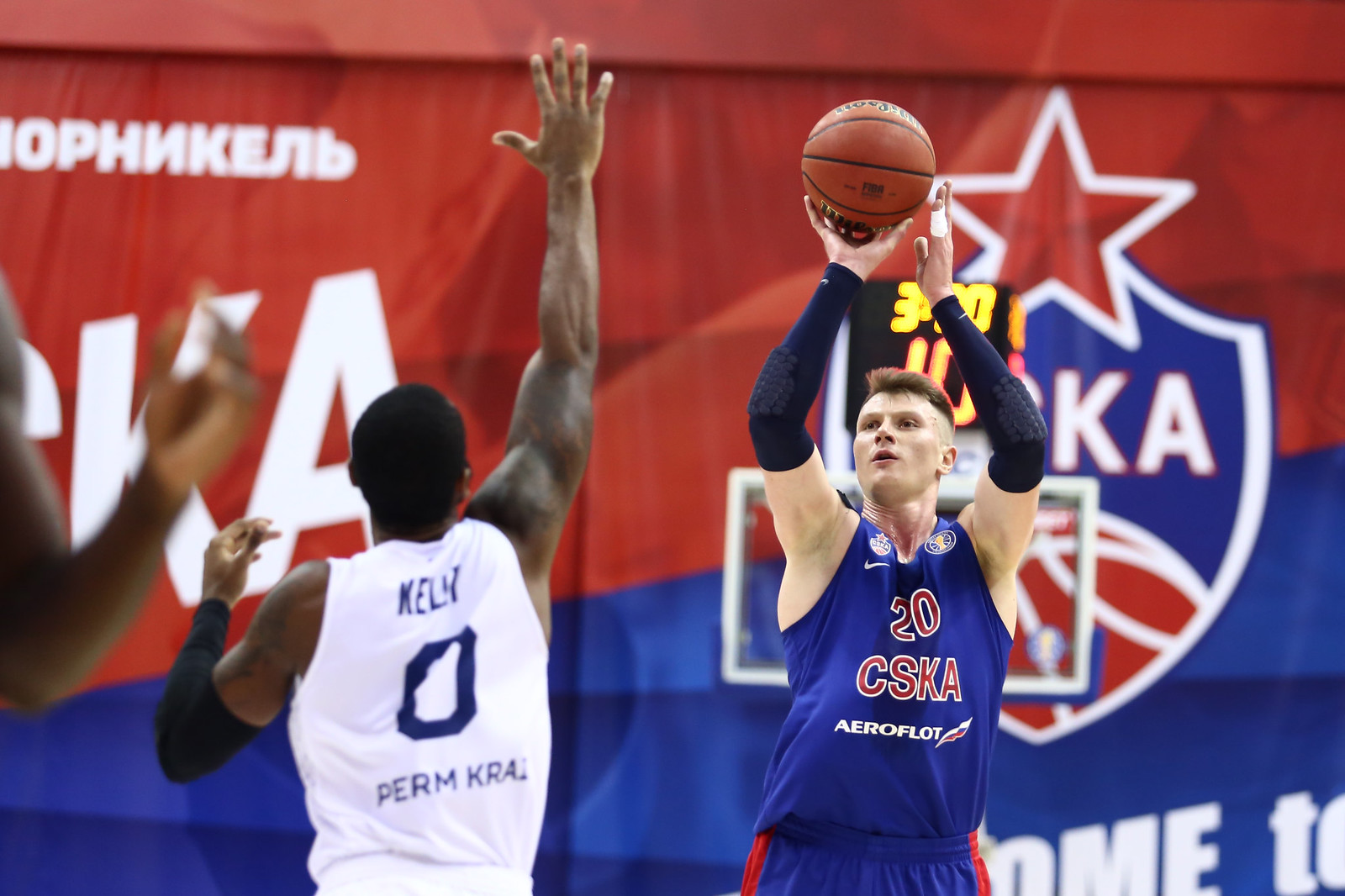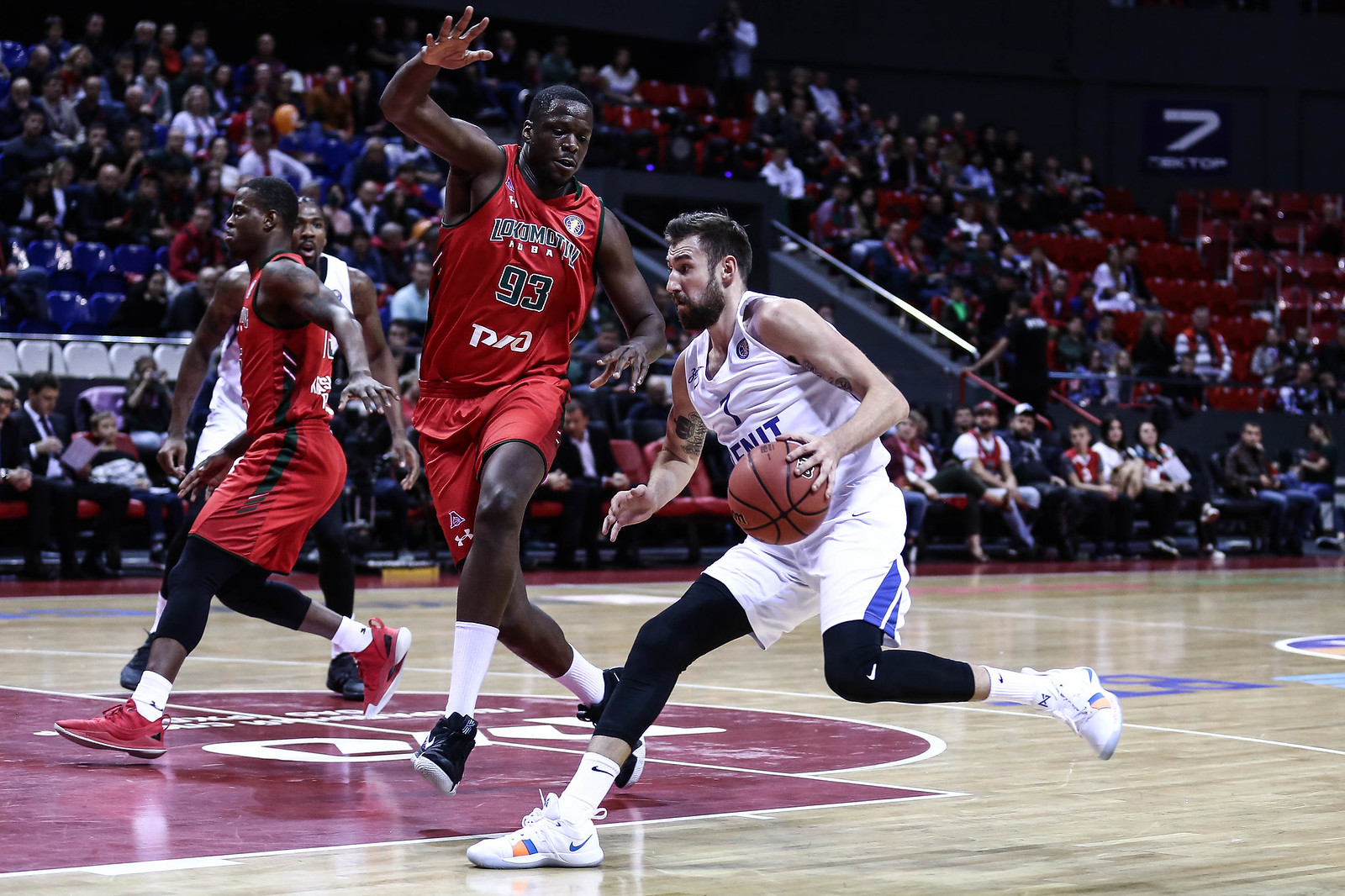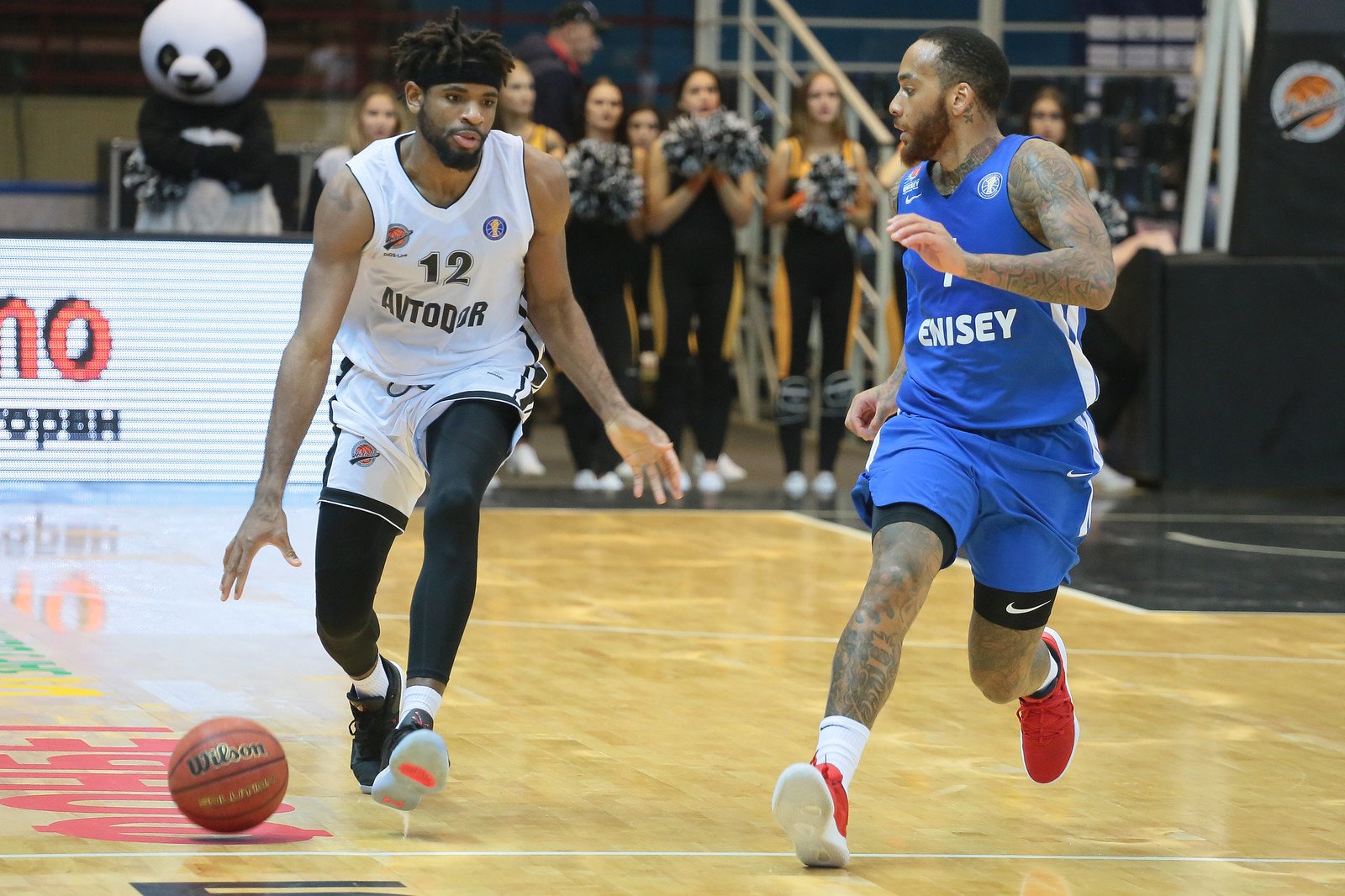Here are the biggest stories, stars and stats to know from the first month of competition.
CSKA and Khimki show why they’re the teams to beat
Last season’s championship finalists have not missed a beat to start the new campaign. They are the only two unbeaten VTB League teams remaining, sitting atop the standings with 5-0 records. The Army Men lead the League in scoring (94.2 points per game), while Khimki has the best defense (68.4 points allowed per game). We’re used to seeing CSKA on top, but Khimki’s blazing start was less expected.
The question now is whether these teams can keep it up. The Army Men can probably handle the grueling schedule (2-3 games per week).
Khimki, though, has already begun dividing games between “important” and “not-important” in an attempt to survive the grind. Last season, the approach cost them home-court advantage in the VTB League playoffs as they finished 6th.
Loko, UNICS and Zenit searching for an identity
The other top contenders have yet to show much consistency. Loko and UNICS each have only one loss, but both teams are still in the process of figuring things out. That said, Kuban and Kazan have terrific potential and should improve as the season progresses.
The situation at Zenit is more complicated. St. Petersburg has only one win in three games, coming against 1-4 VEF. The team’s play has raised question marks, and not only because of the rash of injuries that hobbled them to start the campaign. It’s not unusual for Vasily Karasev’s system to show some rust in the early going, but in the past St. Petersburg was able to win despite the instability. There’s not as much confidence right now in the team’s future success.
The newcomers aren’t the only ones to blame. Zenit veterans like Valiev, Karasev, Simonovic and Voronov are struggling. Of course, much of the attention is still on the new signings. Of them, only Reynolds and occasionally Trushkin have been consistent. Scrubb is trying to carry the team, but lacks experience. Uthoff has looked completely lost in the early going.
Zenit’s biggest disappointment remains Jennings. The star point guard is among the top 10 in assists (5.0 per game). But he was brought in to score and is averaging only 10.3 points per game, while shooting a catastrophic 27.5% from the field (2-15 from beyond the arc).
Avtodor runs wild, Enisey starts shooting
Avtodor’s offseason campaign raised some eyebrows. But the team has shut up the skeptics to begin the season. The Black and White are obsessed with pushing the pace and scoring points in a frenzy. Over the past two games, they’ve perfected their art, racing past Enisey and Kalev with a combined 219 points (106 and 113, respectively).
These games have shown that controlling the tempo will be the key for Avtodor in the future. Teams that allow Saratov to push the pace will have major issues. If the opponent, however, can slow the tempo, they should be in a much better position to beat the Black and White.
Unlike Avtodor, Enisey is trying to find a new identity this season. The Siberian club liked pushing the pace under Oleg Okulov in the past, but rarely put up big numbers on offense. Now Krasnoyarsk is betting everything on the perimeter. They are shooting more often, and more accurately, from beyond the arc compared to previous seasons.
Enisey is averaging 10 made 3-pointers per game, while shooting 35.7% from beyond the arc. Both of those numbers are the highest recorded during Okulov’s four seasons in Krasnoyarsk. Not surprisingly, three-point field-goal attempts have also increased to 42.8% of the team’s total field-goal attempts, up from 35.7% in Okulov’s first season.
Enisey trails only Khimki in made and attempted 3-pointers. The barrage from beyond the arc helped Enisey take down PARMA and Tsmoki-Minsk. But the team’s dependence on the shot does make them vulnerable. Krasnoyarsk doesn’t have much offense in the paint, which was a big reason for the loss to Avtodor.
Nizhny Novgorod’s problems did not come as a surprise
It’s no shock Nizhny Novgorod has had issues this season. The underlying causes were easy to foresee: Zoran Lukic has generally struggled to connect with American players; his teams are known for aggressive, physical basketball, which leads to injuries; and, it doesn’t help that the FIBA Champions League has an especially grueling schedule.
The only surprise, perhaps, is how quickly the problems piled up. Now Nizhny will have to adjust on the fly. The team has started a grueling stretch with stops in Bandyrma, Zielona Gora, Nizhny Novgorod, Astana, Ventspils, Kazan, Nizhny Novgorod over the next three weeks. With no chance to rest and no easy opponents on the schedule, Nizhny will need to dig deep or find itself in a big hole only two months into the season.
Astana is October’s biggest surprise
Astana has been the League’s biggest surprise. Emil Rajkovic’s magic is working in Kazakhstan, as he’s led an unheralded group of players to wins over Tsmoki-Minsk, Zielona Gora and even Zenit. The Yellow and Blue are now tied for 3rd place in the standings.
Astana likes to attack with an emphasis on fast breaks, playing through the paint and iso’s. The Yellow and Blue try to be physical on defense (at times, with great success). The new coach has also done a good job of integrating Kazakh talent. Rustam Yergali, Alexander Zhigulin and Maxim Marchuk have all become important pieces of the rotation.
The approach is working so far for Astana as they have proved they can beat their rivals and even surprise one of the top contenders.
Zielona Gora remains a dark horse
Zielona Gora has already played three times, but figuring out the team’s potential is tricky. The Poles impressed in a win over Tsmoki-Minsk and were competitive vs. UNICS. But a loss at home to Astana was a disappointing setback. The League newcomers will most likely end up somewhere in the middle of the standings. The Greens should be competitive vs. other playoff hopefuls, and, on occasion, cause problems for the contenders.
The playoff battle will be heated
The first games of the season have shown that the playoff battle is going to provide the most drama. There are few surprises at the top of the standings with CSKA, Khimki, UNICS and Loko comfortably in charge. Zenit is the only contender missing so far.
But the battle for the remaining postseason spots is already heating up. It’s difficult to pick a favorite. Astana has started strong; Avtodor is putting up big numbers; Enisey is taking care of business; Kalev looks decent. Zielona Gora and Nizhny Novgorod could improve. PARMA also has room for growth. VEF and Tsmoki look like the weakest teams so far, but Riga proved last season they can bounce back from a slow start. Minsk will also have opportunities.
Buford, Mickey, Almeida, Whitehead and Harrison are stars to watch
The first month of the season gave us several breakout performances. Some were expected, others were a complete surprise. Ex-NBA players Mickey and Whitehead belong in the first category. As expected, they have become leaders at Khimki and Lokomotiv, respectively.
Whitehead is the primary sniper and top distributor on his team (3.8 assists per game). For a slow-tempo team like Loko, Whitehead’s 15.8 points per game are impressive. Mickey has been even more effective, averaging 12.6 points and 6.6 rebounds, while shooting 62.5% from the field (25-40, 6-9 on 3-pointers).
Kalev’s Ivan Almeida was the first to provide a shock. The Cape Verde forward erupted for 36 points in his debut vs. Nizhny Novgorod, which leads the League so far. His pace has slowed since, but he’s still averaging 20.3 points, 5.5 rebounds and 2.5 assists.
D’Angelo Harrison, unlike his teammate Roberson, hasn’t put up any crazy numbers on offense. He just gets the job done in every way imaginable. The Enisey leader is ranked in the top-16 in five different categories: 15.5 points, 6.3 rebounds, 4.0 assists, 1.5 steals and a 20.5 efficiency rating. Given Okulov likes to bring Harrison off the bench, he’s an early favorite for Sixth Man of the Year.
Perrin Buford, though, has been the biggest revelation in October. The American was known as a role player when he signed with Avtodor and few expected he would lead the League in minutes through the first month. But Buford has quickly adjusted to playing power forward, where he thrives in Avtodor’s up-tempo system. He’s even knocked down two of his four three-point attempts.
Perrin is the embodiment of Avtodor’s revamped roster. Despite his lack of height or reliable outside shot, the forward ranks in the top three in scoring (20.0 points per game) and rebounds (8.7).
Not surprisingly, he’s the runaway leader in efficiency rating, topping 2nd-place Alexey Shved by a staggering 5.5 (26.3 vs. 20.8)! That’s perhaps the best way to quantify Buford’s dazzling start.
